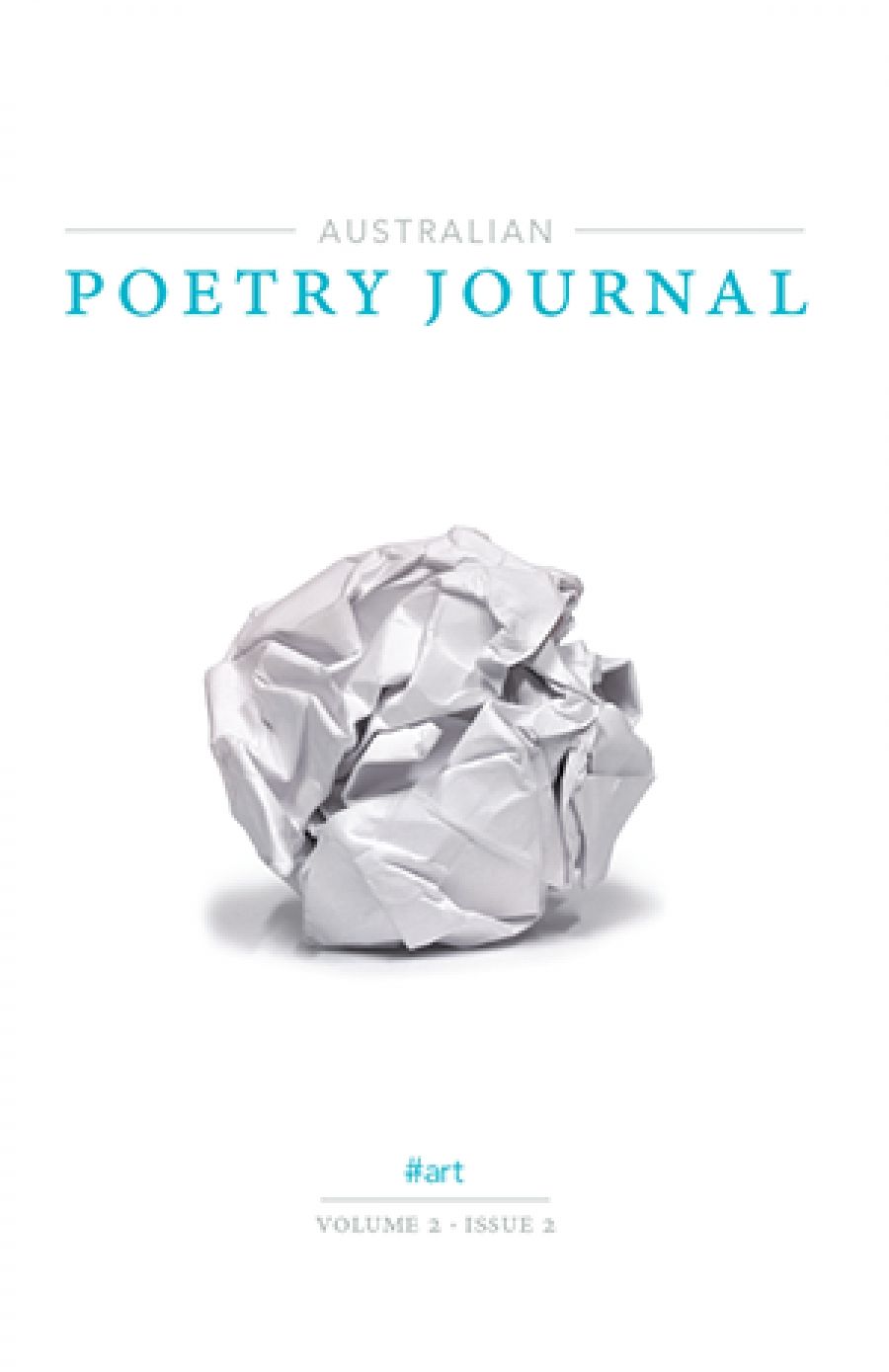
- Free Article: No
- Contents Category: Journal
- Review Article: Yes
- Online Only: No
- Custom Highlight Text:
Australian Poetry Journal, the biannual publication published by Australian Poetry, offers a national focus for poetry and criticism. It includes contributions from established writers and from new voices. All in all, APJ indicates a cheering and cohering centre of gravity for all things poetic in contemporary Australia.
- Book 1 Title: Australian Poetry Journal Volume 2.1 technology
- Book 1 Biblio: Australian Poetry, $25 pb, 127 pp, 9780987176530
The second issue takes the idea of technology as something of a loose framework for its range of poetry and criticism. As editor Bronwyn Lea puts it, technology can refer both to the various tools we use to shape our environment and to the systematic thinking that lies behind such labour. While poets may not be conventionally associated with technology, like everyone else they live in a highly technological environment, in terms of both objects and ways of thinking. In addition, in an almost Deleuzian manner, the poem itself can be seen as a constructed thing, crafted from the machine of the imagination working in synergistic energy with tools such as pens, computers, and publishing houses.
As Lea muses, a themed structure can often be a mixed blessing in terms of structuring a journal, seeming to promise a shape of sorts, while running the risk of circumscribing the individual poems. Indeed, as she admits, a number of the poems included here suggest only very tangential connections to any notion of technology, unless it is broadened out into a diluted sense of anything that is ‘made’. Cameron Fuller’s leading poem, ‘Peak Oil Hour’, for instance, explicitly highlights our reliance on the technology of the car and the ‘liquid rations’ that sustain it, together with the anxiety with which ‘we queue at stations / where desert heat shimmers in the haze / of an open nozzle’. Similarly, John Kinsella’s ebullient ‘Grantchester Genetically Modified Plough Play’ uses a modified medieval structure to critique Monsanto and the way in which technology is altering the very food we eat. Other poems are more varied in their topics and landscapes. Kate Middleton’s poignant ‘Fragment of a Letter’ uses pieces of paper from Hansel to Gretel to comment on loss and guilt: ‘And, too in the night I remembered the dirt … and the stains of that dirt never left me.’ Maria Takolander’s ‘The Arrivals’ uses a black and white television and the flickering world of a movie as windows onto a world which is ‘already absenting itself’, a disconcerting sphere in which ‘Nights were a scullery, / close as a womb’.
While a poetry journal may be primarily to do with the publication of recent poetry, it is also an important space in which to hear some of the critical discussion that surrounds poetry as a discourse, bringing it explicitly into the world of critique and reading. In the ‘Spotlight’ section, a contemporary poet provides a little context and entrée for an earlier Australian poet, thus highlighting important work and ideas that continue to impact on today’s writing. In this issue, Felicity Plunkett situates Gwen Harwood, giving a personal introduction as well as a brief indication of Harwood’s key themes and significance. This mini-essay comes with the inclusion of five poems, drawing back to mind the luminosity of Harwood’s work and potentially opening her work to new readers. A little more of Plunkett’s own luminous prose would also have been appreciated here, to provide an extension of concepts merely touched upon.
In addition to an exhaustive and very useful listing of poetry published in Australia since the last issue of the journal, APJ also includes several reviews and themed essays, placing poetry in the context of current thinking. Michael Sharkey considers new and very different work from Leopold Haas, Janis Freegard, and Anthony Lawrence; in an essay entitled ‘Anthologies and the Poetic Stock Market’, Jaya Savige tracks the usefulness and the limitations of Geoffrey Lehmann and Robert Gray’s anthology Australian Poetry Since 1788 (2011). While Savige praises the anthology’s emphasis on the elegy as reflective of some of Australia’s finest poetry, he notes too its perhaps inevitable biases and omissions (for example, no Aboriginal male poet is included). Martin Duwell reviews David Brooks’s re-reading of the ‘Ern Malley’ affair, The Sons of Clovis (2011), which not only retells events in the light of a ‘secret’ Australian poetry of hoaxes, but also offers a reading of the often disparaged poems themselves. Finally, David McCooey’s more extensive and provocative essay ‘Poets, Apples and Androids’ returns us to the journal’s initiating questions concerning the writing, production, and reception of poetry in a digital world, considering the ways in which apps in particular might cause us to rethink the manner in which creativity and composition might actually work.
A few teething problems: there are some typos, not every writer who appears in the journal is acknowledged in the contributors’ notes, and those entries that are there are only mostly alphabetical. Small matters – but ones that should be resolved in order to entrench APJ as the premier journal of Australian poetry.


Comments powered by CComment